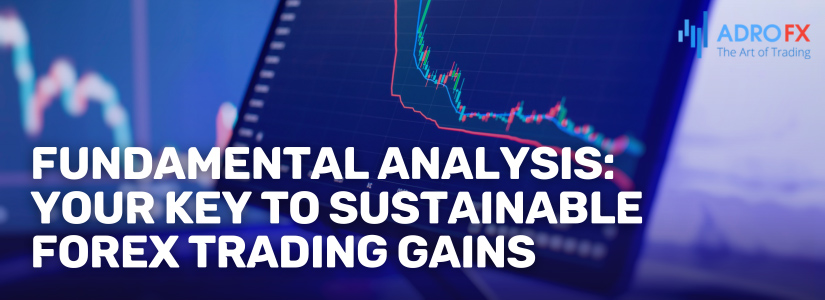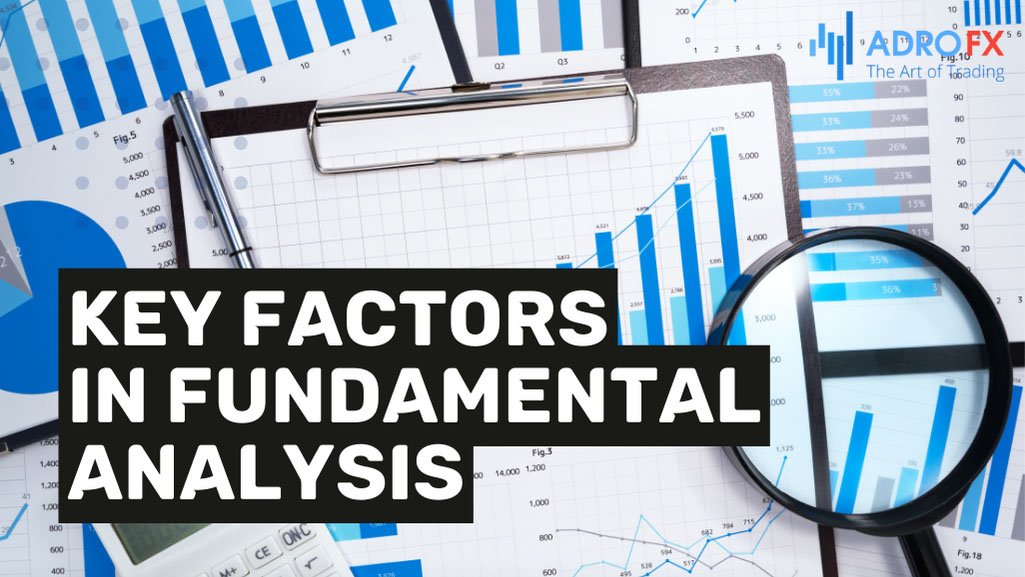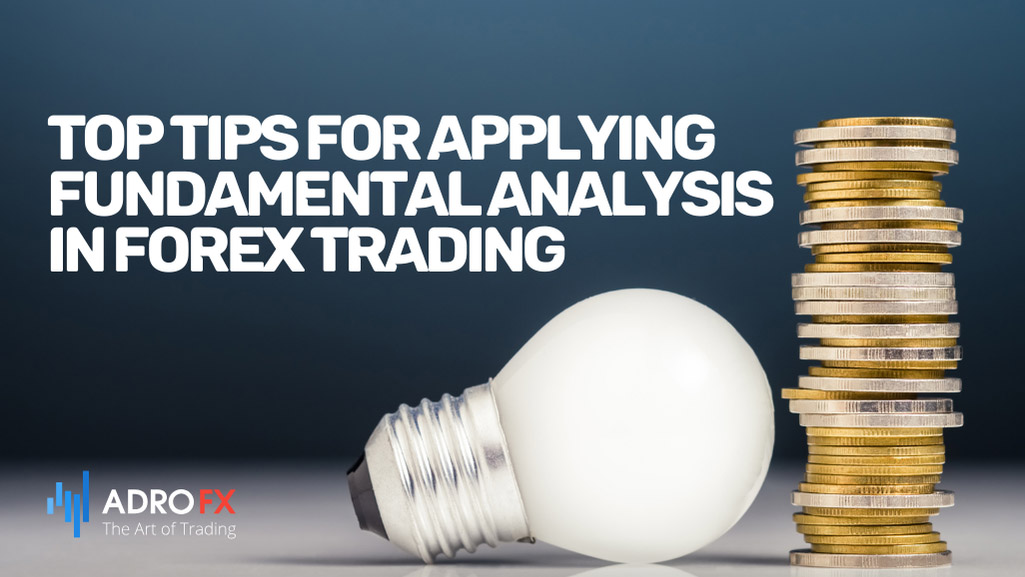Fundamental Analysis: Your Key to Sustainable Forex Trading Gains

In today's trading landscape, many retail traders, especially those in the forex market, heavily rely on technical analysis, often neglecting the importance of market fundamentals in their trading decisions. Ironically, fundamentals serve as the bedrock of most markets, profoundly influencing their intrinsic value and driving their price movements. Acquiring an understanding of fundamental analysis equips traders with a robust framework for comprehending market behavior and identifying potential trading opportunities.
Understanding Fundamental Analysis
Fundamental analysis revolves around evaluating an asset's value based on its underlying economic factors, irrespective of its current market price. It considers a wide range of economic indicators to assess the health and outlook of an economy, providing a holistic view of market dynamics.

Key Factors in Fundamental Analysis
Gross Domestic Product (GDP)
Gross Domestic Product (GDP) stands as a quintessential measure of a country's economic performance, representing the total value of all goods and services produced within a specified period. The trajectory of GDP over time serves as a barometer of economic growth or contraction, with higher GDP readings indicative of a robust economy and potentially a stronger currency.
Employment Data
Employment data, closely intertwined with GDP, holds substantial influence over currency valuations. The relationship between unemployment and GDP, encapsulated by Okun's law, underscores the significance of employment metrics as fundamental forex indicators. Favorable employment figures, such as those from the US Non-Farm Payrolls (NFP), typically correlate with economic strength and currency appreciation.
Inflation Rates
Inflation, gauged by metrics like the Consumer Price Index (CPI), plays a pivotal role in shaping monetary policy and currency valuations. Central banks employ interest rates as a primary tool to mitigate inflationary pressures, with higher inflation rates often exerting downward pressure on currency values.
Interest Rates
Central banks' decisions regarding interest rates profoundly impact currency markets. Anticipations of future interest rate movements, guided by inflationary trends, influence currency demand and valuation. Higher interest rates generally attract greater capital inflows, bolstering currency strength.
Other Fundamental Measures
Numerous other fundamental indicators wield significant influence over currency prices:
● Trade Balances: A country's trade surplus or deficit impacts currency strength.
● Purchasing Managers’ Index (PMI): Reflects economic activity and sentiment within the manufacturing sector.
● Average Hourly Earnings: Signals labor market dynamics and inflationary pressures.
● Retail Sales: A key gauge of consumer spending and overall economic health.
Incorporating a holistic understanding of these fundamental factors into trading strategies empowers traders to navigate forex markets with greater insight and precision.

Utilize the Economic Calendar
Make use of economic calendars like those offered by Bloomberg and Forex Factory to stay informed about scheduled economic announcements. Take note of release dates and times for key fundamental indicators relevant to the currencies you trade, such as FOMC announcements, retail sales figures, GDP reports, and non-farm payroll (NFP) numbers for pairs like EUR/USD.
Journal Price Movements
Maintain a detailed trading journal to track how prices respond to economic announcements over time. By documenting past price movements, you can identify patterns and trends in market behavior following different types of economic data releases. This practice enhances your understanding of how various announcements influence currency prices and aids in making informed trading decisions.
Assess Forecast vs. Actual Data
Monitor the variance between forecasted and actual economic data releases to gauge market reactions. The market often responds based on whether the reported figures deviate from expectations. Larger disparities between forecasted and actual data can lead to increased market volatility, presenting potential trading opportunities.
Recognize the Significance of Non-Farm Payrolls (NFP)
Acknowledge the significant impact of non-farm payroll (NFP) data on forex markets. Released on the first Friday of each month at 8:30 a.m. E.T., NFP figures carry considerable weight in currency valuations due to their reflection of the US economy's performance, which influences global market sentiment.
Consider Trading Against Market Sentiment
Explore trading strategies that capitalize on unexpected market reactions to economic releases. For instance, if the market exhibits a contrary movement to what the economic data suggests, consider initiating trades in the opposite direction. This approach involves assessing underlying market sentiment and implementing appropriate risk management measures, such as setting Stop Loss orders.
Integrating fundamental analysis into your forex trading strategy offers valuable insights into market dynamics and enhances your ability to capitalize on trading opportunities. By leveraging economic calendars, tracking price movements, evaluating forecasted versus actual data, recognizing the significance of key indicators like NFP, and considering contrarian trading approaches, you can navigate forex markets with confidence and skill.

Pros & Cons of Fundamental Analysis in Forex Trading
Understanding the merits and drawbacks of fundamental analysis is crucial for navigating the complexities of forex trading effectively. While fundamental analysis offers valuable insights into market dynamics, it also presents challenges that traders must carefully consider. Let's explore the advantages and disadvantages of incorporating fundamental analysis into your forex trading strategy.
Pros
- Foundation for Informed Decisions
Fundamental analysis provides traders with a solid foundation for making informed trading decisions. By evaluating economic indicators and understanding their impact on currency valuations, traders gain insights into the underlying factors driving market movements. - Long-Term Trends
Fundamental analysis is well-suited for identifying long-term trends in currency markets. By focusing on economic fundamentals such as GDP, employment data, and inflation rates, traders can discern broader market trends and position themselves accordingly. - Global Perspective
Fundamental analysis offers a global perspective on currency markets by considering macroeconomic factors affecting different economies. This broader view enables traders to anticipate currency movements resulting from shifts in global economic conditions. - High-Impact Events
Key economic events, such as central bank announcements and non-farm payroll releases, often have a significant impact on currency valuations. Fundamental analysis equips traders to anticipate and capitalize on these high-impact events.
Cons
- Complexity and Subjectivity
Fundamental analysis can be complex and subjective, requiring a deep understanding of economic principles and geopolitical factors. Interpreting economic data and assessing its implications for currency markets involves a degree of subjectivity and interpretation. - Time-Consuming Research:
Conducting a thorough fundamental analysis requires extensive research and analysis of economic indicators, geopolitical events, and central bank policies. This process can be time-consuming and may not always yield immediate trading opportunities. - Market Noise and Mispricing
Currency markets are influenced by a myriad of factors beyond fundamental indicators, including market sentiment, geopolitical tensions, and speculative trading. As a result, fundamental analysis may not always accurately predict short-term price movements or account for market noise and mispricing. - Limited Application in Short-Term Trading
Fundamental analysis is often better suited for identifying long-term trends rather than short-term trading opportunities. In fast-paced intraday trading environments, other factors such as technical analysis and market sentiment may play a more significant role in decision-making.
In conclusion, while fundamental analysis offers valuable insights into market dynamics and long-term trends, it also has limitations and challenges that traders must consider. By integrating fundamental analysis with other trading methodologies and risk management techniques, traders can effectively navigate forex markets and capitalize on trading opportunities with confidence and skill.

Top Tips for Applying Fundamental Analysis in Forex Trading
- Stay Updated with Economic Calendars
Utilize economic calendars from reputable sources like Bloomberg and Forex Factory to track scheduled economic announcements. Pay close attention to release dates and times for key fundamental indicators relevant to the currencies you trade, such as GDP reports, employment data, and central bank announcements.
- Keep a Detailed Trading Journal
Maintain a comprehensive trading journal to document how prices respond to economic announcements over time. By recording past price movements, you can identify patterns and trends in market behavior following different types of economic data releases. This practice enhances your understanding of how various announcements influence currency prices and aids in making informed trading decisions.
- Monitor Forecast vs. Actual Data
Monitor the variance between forecasted and actual economic data releases to gauge market reactions. Significant disparities between forecasted and actual data can lead to increased market volatility, presenting potential trading opportunities. Be prepared to adjust your trading strategy based on the market's response to economic news.
- Recognize the Impact of High-Impact Events
Acknowledge the significance of key economic events, such as non-farm payroll (NFP) releases and central bank announcements, in driving currency market movements. These events often have a substantial impact on currency valuations and present trading opportunities for informed traders.
- Consider Contrarian Trading Approaches
Explore trading strategies that capitalize on unexpected market reactions to economic releases. If the market exhibits a contrary movement to what the economic data suggests, consider initiating trades in the opposite direction. However, exercise caution and implement appropriate risk management measures, such as setting Stop Loss orders.
By incorporating these top tips into your forex trading strategy, you can leverage fundamental analysis to gain valuable insights into market dynamics and enhance your ability to capitalize on trading opportunities with confidence and skill.
Conclusion
In conclusion, fundamental analysis stands as a cornerstone in the world of forex trading, offering traders a profound understanding of market dynamics and long-term trends. While it provides valuable insights into economic indicators and high-impact events, it also presents challenges such as complexity and subjectivity, time-consuming research, and limited applicability in short-term trading. However, by integrating fundamental analysis with other methodologies and utilizing effective risk management techniques, traders can navigate forex markets with confidence and skill. By staying updated with economic calendars, maintaining detailed trading journals, monitoring forecast versus actual data, recognizing the impact of high-impact events, and considering contrarian trading approaches, traders can leverage fundamental analysis to capitalize on trading opportunities and achieve success in the forex market.
About AdroFx
Established in 2018, AdroFx is known for its high technology and its ability to deliver high-quality brokerage services in more than 200 countries around the world. AdroFx makes every effort to keep its customers satisfied and to meet all the trading needs of any trader. With the five types of trading accounts, we have all it takes to fit any traders` needs and styles. The company provides access to 115+ trading instruments, including currencies, metals, stocks, and cryptocurrencies, which make it possible to make the most out of trading on the financial markets. Considering all the above, AdroFx is the perfect variant for anyone who doesn't settle for less than the best.










